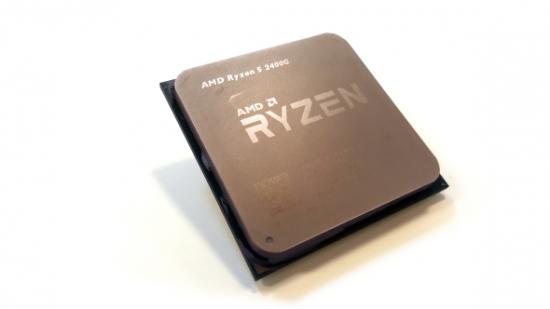The Ryzen 5 2400G is the first top-end AMD Raven Ridge desktop APU to hit the market. This $163 (£126) chip is the first to pair both the Ryzen CPU technology with the red team’s Vega GPU hardware. And, with the current GPU drought, a chip with this sort of gaming performance couldn’t have come at a better time.
With total AM4 compatibility the Ryzen 5 2400G will function in our pick of the best AMD gaming motherboards.
The idea of this ‘Ryzen Processor with Radeon Vega Graphics’ is that it will deliver a modicum of gaming performance, with decent processing capabilities, without the need to have a discrete graphics card attached to your rig. That’s always been the overarching promise of the accelerated processor unit (APU), but this is the first time we’ve seen a chip which is actually capable of delivering on it. And yes, ‘Ryzen Processor with Radeon Vega Graphics’ is how AMD are marketing the new Raven Ridge chips, rather than as an APU.
Previous APUs have been too compromised on both the GPU and CPU sides to really compete, but with the modern Zen and Vega architectures in place that has definitely changed. And the Ryzen 5 2400G and Ryzen 5 2200G are testament to that.
Click on the quick links to jump between sections.
- AMD Ryzen 5 2400G specifications
- AMD Ryzen 5 2400G benchmarks
- AMD Ryzen 5 2400G performance
- AMD Ryzen 5 2400G verdict
AMD Ryzen 5 2400G specifications
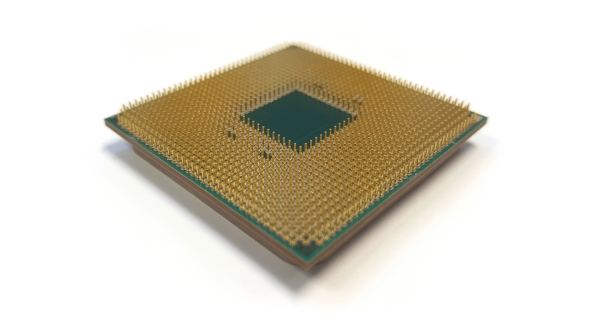 The Raven Ridge APU platform is built from those twin Zen and Vega architectural pillars, but we’re not talking about two separate chips, as with Intel’s Kaby Lake G setup. Sitting beneath that unassuming heatspreader is a single slice of silicon with the two AMD technologies married together.
The Raven Ridge APU platform is built from those twin Zen and Vega architectural pillars, but we’re not talking about two separate chips, as with Intel’s Kaby Lake G setup. Sitting beneath that unassuming heatspreader is a single slice of silicon with the two AMD technologies married together.
That marriage is built on the Infinity Fabric interconnect that combines the GPU and CPU cores, as well as the DDR4 memory controllers, different multimedia and display silicon, and input and output hub. The Infinity Fabric not only ensures speedy communications between the relevant components, but also enables the sort of finegrain power control necessary to manage the varied demands of the different parts of the die.
This Ryzen 5 2400G chip essentially sports the same four-core, eight-thread design as low-end Ryzen 5 1400, but with some notable differences. First, AMD have chosen to use a single quad-core complex (CCX) in the Raven Ridge chip, where they used a twin CCX design for the 1400, the same as they did for the eight-core Ryzen 7 1800X. For the 1400 they disabled two cores on each of the CCX, but that meant it retained a larger amount of L3 cache memory than the new Raven Ridge chips.
For the 2400G they’ve gone for that solitary CCX, subsequently with half the L3 cache, partly because it’s cheaper, but also because of the space constraints of having to fit a full GPU into the same die as well. The lower latency, born of not having to communicate between two independent CCX, supposedly then offsets the relative lack of cache.
This top-end APU is also aided by the fact it’s got a much higher base and boost clock spec. The 3.9GHz top speed of the 2400G is well ahead of the Ryzen 5 1400’s 3.45GHz, and it’s also more likely to regularly deliver that peak clockspeed thanks to a redesign of the Precision Boost feature first introduced with the inaugural Ryzen CPUs. Precision Boost is essentially the feature that dynamically controls when the maximum boost clock can be used.
With the Ryzen 1000-series chips it only comes into play when just two cores are in use, but the second-gen version for the Ryzen 2000-series is based more on the temperature and thermal headroom available to the chip at any given time, allowing it to boost even when all cores are in use. With the first iteration, even games which offloaded just a tiny amount of work across more than two cores would relegate the chip to its base clockspeed, but that doesn’t happen now, making the new implementation far more game-friendly.
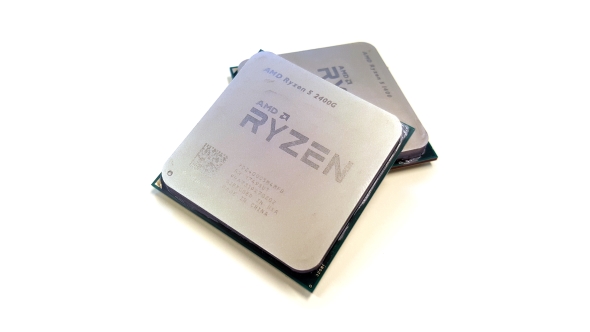
There are, however, fewer PCIe 3.0 lanes in the 2400G compared with the first gen Ryzen 5, with only eight inside the Raven Ridge design, compared with 16 in the 1400 CPU. That makes the 2400G cheaper and easier to manufacture, but with a mainstream GPU having a x8 PCIe slot shouldn’t make any noticeable difference in terms of performance.
It is worth noting that despite the Ryzen 2000 designation the Raven Ridge APUs are not using the updated 12nm Zen+ architecture that’s set to arrive with the AMD Ryzen 2 processors launching in April. All the performance improvements then come from the updated features rather than improved silicon.
But that’s just the CPU specs, the graphics component of the Raven Ridge design is just as important, and the Vega GPU at its heart packs more cores inside than the mobile versions that were launched last year. The Vega 11 GPU (named because of its 11 compute units) has 704 GCN cores inside it, running at a speedy 1,250MHz. There’s no HBM2 memory attached to this version of Vega, which means it’s far easier to produce in volume and a lot cheaper, but aside from that the feature set is the same as the bigger discrete GPUs.
Now, compared with the 4,096 GCN cores inside the RX Vega 64 card that might seem pretty miserly in comparison, but that’s a singly 295W component, while this GPU is only part of a much smaller 65W chip.
AMD Ryzen 5 2400G benchmarks
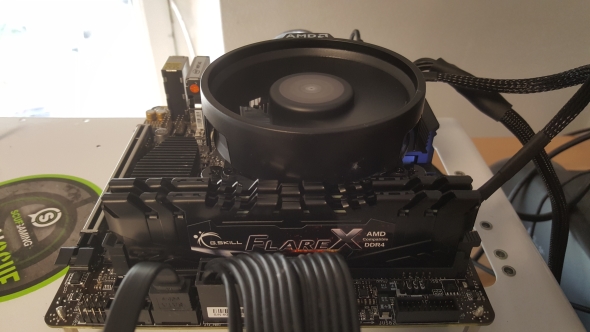
AMD Ryzen 5 2400G performance
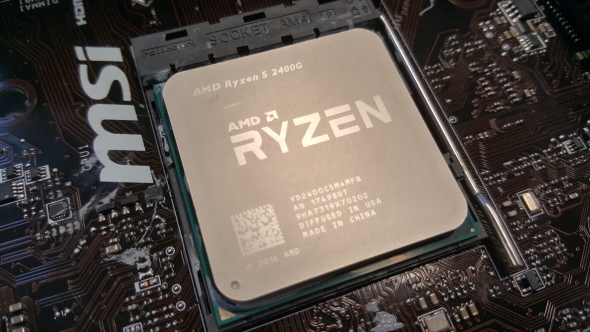
On both CPU and GPU counts the performance of the Ryzen 5 2400G is rather impressive. On one hand it’s much improved over the straight Ryzen 1000-series CPU it’s replacing and on the other it has introduced an unprecedented level of integrated graphics silicon power.
With four multi-threaded cores at its disposal there is a lot of processing power available with this relatively low-end APU. The Core i5 8400 is one of our favourite processors at the moment, as is the the Ryzen 5 1600X, and both cost a good chunk more than this 2400G yet really aren’t that far ahead at stock speeds.
The single-threaded pace, thanks to the more-effective Precision Boost 2 feature, is at a decent level for a gaming processor. That means if you pair this chip with a quality graphics card (tough to do right now, I’ll admit) it’s still going to be able to keep a discrete GPU running at pace. And with all eight threads capable of performing at the 3.9GHz boost clockspeed it’s got some serious processing chops too.
But in terms of integrated graphics performance it’s light years ahead of anything else in this price bracket or scale. Admittedly the 1080p gaming frame rates we’re getting out of the 2400G aren’t going to set the world alight, but those are set at the highest settings, with all the post-processing bells and whistles, well, ringing and whistling.
Knock the resolution down to 720p, however, and you get genuine gaming performance from the likes of Hitman, Doom, Rise of the Tomb Raider, and in particular GTA V. The other three vary between 59fps and 44fps at medium settings, but with GTA V the Vega GPU at the heart of the 2400G is capable of hitting 57fps on very high settings across the board at that lower res. And by knocking GTA V down to ‘normal’ across the board it’s even able to hit 62fps on average at 1080p.
That’s seriously impressive from a system with no discrete GPU attached, and means building a low-power, tiny, budget gaming PC isn’t the trial or compromise it once was.
Though the Raven Ridge chips do have much higher thermals than previous Ryzen CPUs. That’s partly down to the extra GPU silicon, but also because AMD have opted for the cheaper, nonmetallic thermal interface material (TIM) in the design.
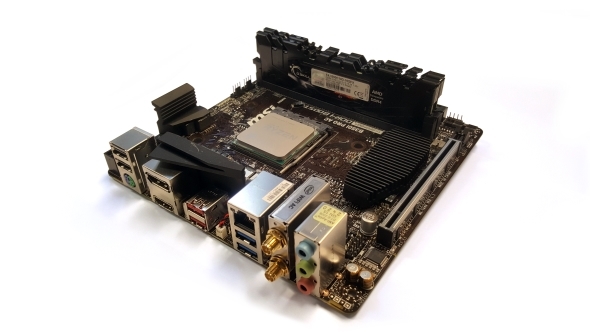
The real treat with the top-end Raven Ridge APU, however, stems from the level of overclocking I was able to squeeze out of it. With normal multiplier overclocking, and some judicious tweaking of the GPU clocks and voltages, I was able to hit 4.05GHz stably on the CPU side and 1,500MHz on the Vega graphics silicon. At that speed you get a healthy bump in the single-threaded gaming performance and it will give your graphics power a bit of a speed bump too.
But that’s not the whole story. Thanks to an accident of testing I was actually able to push the CPU much, much further. Stability was an issue pushing beyond 4.05GHz using the multiplier, but by overclocking the BCLK, which normally sits at around 100MHz, I was able to get up to a completely stable 4.55GHz.
Edit: So, unfortunately the sleepy overclock looks like it was a recurrence of a sleep timer bug which happened to the original Ryzen CPUs. The problem was subsequently patched out of the 1000-series chips, but it looks like it’s back in force with Raven Ridge.
The bug throws out the timing within the OS which makes everything else think workloads are completing faster than normal, so every other benchmark then reports higher frame rates and index scores.
I didn’t see the same issue popping up with the Ryzen 5 1400, and even with the most up-to-date BIOS update the 2400G is still suffering from the same sleepy time bug.
Damn you Windows, you had me fooled.
AMD don’t normally enable BCLK overclocking on the Ryzen chips, it’s certainly not in the latest Ryzen Master overclocking utility, nor in the BIOS of our MSI B350I Pro AC, but the board still took it upon itself to automatically overclock to 112.52MHz if you put the system to sleep while already modestly overclocked.
What a nice board…
The 4.55GHz overclock was equally stable with the Vega GPU overclocked to 1,500MHz, or with a discrete graphics card in the PCIe slot. At that level you’re talking about processor performance in excess of the top Kaby Lake Core i7 7700K. Remember, this time last year that was the fastest gaming CPU available and around twice the price of what the 2400G is retailing for.
With both CPU and GPU overclocked to that extent – which also pushes the memory up to 3,600MHz – the Raven Ridge APU was delivering 1080p gaming performance knocking around the 30fps level where it becomes actually playable.
Now, it’s possible the bizarre sleepy time overclock might get patched out, and with pre-release BIOS updates we’ve been unable to replicate it in boards where you can tweak the BCLK settings manually. But we’ll know for sure when release BIOS patches are released for the relevant boards.
AMD Ryzen 5 2400G verdict
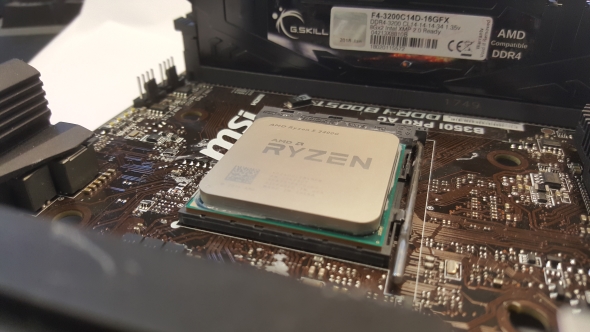
AMD have released their first desktop APU that makes genuine sense for gamers. Before now their APUs ended up using hobbled processor and weakheart GPU cores, but by building on the twin pillars of the Ryzen and Vega technologies respectively AMD have managed to deliver a single chip solution that can offer playable gaming performance without the need for a discrete graphics card.
Obviously we’re not talking about high-end PC power here. You’re not going to be powering your 1440p or 4K gaming panels at their native resolutions or refresh rates, but the level of gaming you can pick up at 720p, and sometimes even at 1080p, is seriously impressive.
There are caveats, however. You will need to knock back your game settings to accommodate the low power GPU hardware in place, and the review kit that came in from AMD to test the first Raven Ridge desktop chips does cost a pretty penny, so a cheap gaming rig this isn’t. All told, our kit runs to $617 (£578) and that’s before you add in the cost of a chassis, storage, and a power supply.
The G.Skill memory alone costs almost $100 more than the Ryzen 5 2400G itself, and the mini-ITX MSI board isn’t exactly a bargain board. You will need good supporting components, especially on the memory side, to be able to get the most out of the APU. Swapping the 3,200MHz RAM for an 8GB 2,133MHz kit has a big negative impact on the performance of the platform.
But the 2400G still offers a fantastic upgrade path for a gamer on a budget. Graphics cards are expensive, and not just because of cryptocurrency, price gouging, or manufacturing problems we’re seeing at the moment. The GPU is often the most expensive part of any gaming build, so being able to start out your PC gaming life without necessarily having to buy one right at the start is a tantalising prospect for many.
Building a rig around the 2400G will allow you to create a rig you can game on straight away, with the easy upgrade of dropping in a new graphics card when you can afford one for a massive frame rate boost. The quad-core, eight-thread CPU at the heart of top Raven Ridge part are is almost good as the top Intel Kaby Lake chip from this time last year. And, with our bizarre overclock in place you’re getting a chunk of silicon that’s capable of hitting practically the same level as a $350 processor from 12 months ago..
Even without the BCLK overclock the pace of the Ryzen 5 2400G is enough to deliver great gaming performance with a discrete GPU in place, even with that slightly limited x8 PCIe rating. This is a great base-line chip for your new gaming rig, and with the guaranteed longevity of the AM4 platform there’s a lot of upgrading potential for the future.
The top-end Raven Ridge chip is the first APU I’d genuinely considering building a new gaming PC around. It’s got the graphical chops to deliver decent frame rates at modest settings, and the CPU power to leverage any discrete graphics card you put its way down the line.
